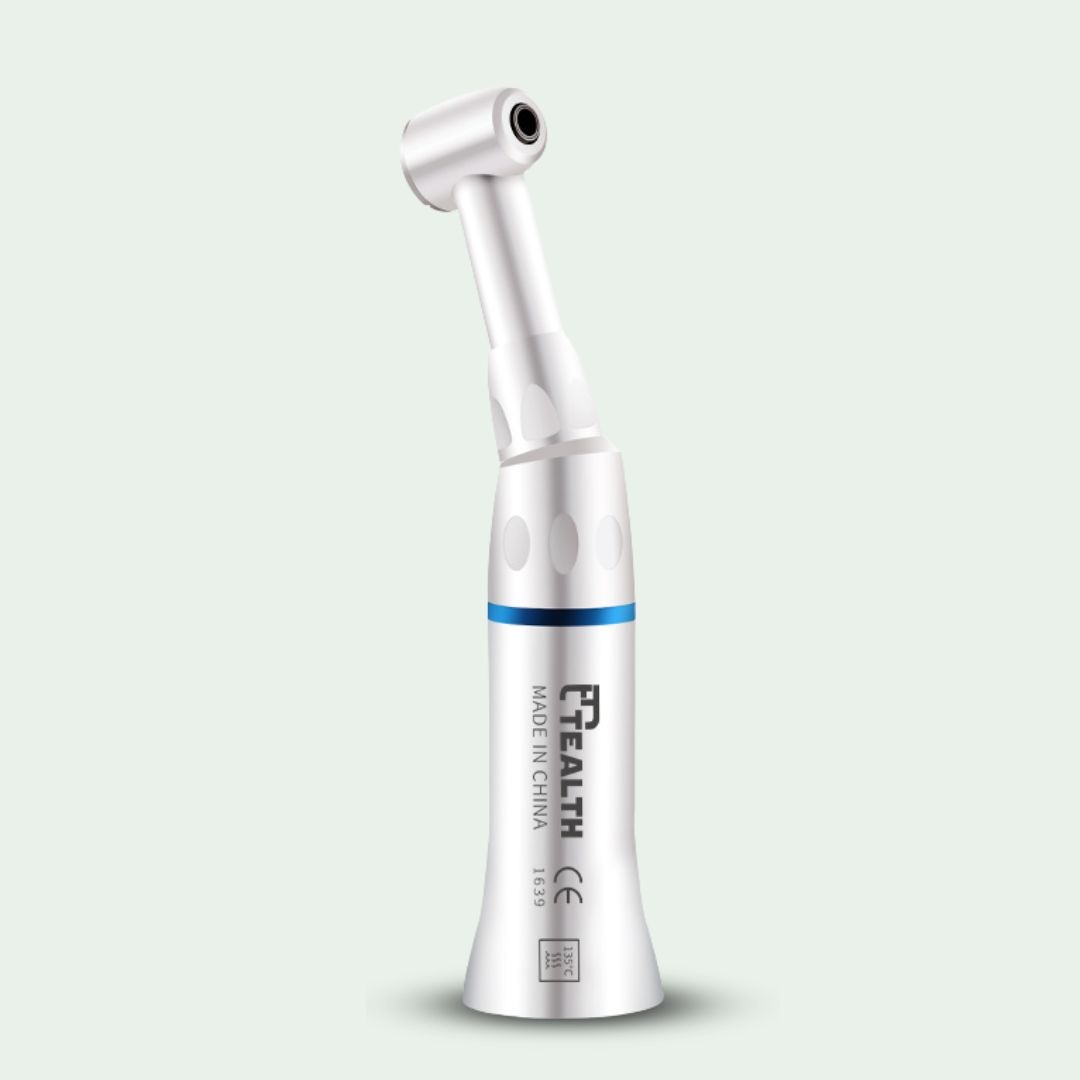
Low Speed Dental Handpiece
Rotary instruments play a vital function in dentistry. Dental handpieces are used for the majority of dental procedures. Handpieces with various technological features are available on the market and are used to perform delicate tasks.
Motor driven handpieces require a motor to operate, they are low speed. These handpieces are used for a variety of tasks, including trimming, finishing, and polishing. When the motor gets its power from electricity, it is known as a micromotor.
- Straight handpiece: The long axis of the bur remains in the same plane as the long axis of the handpiece with a straight micromotor handpiece.
This handpiece is used for trimming dentures, crowns, and bridges, as well as pumice cleaning and bone cutting. The neck of the Micromotor Straight handpiece incorporates a rotating style fastening device that is utilised for bur change.
- Contra-angle handpiece: To give simple access to the intraoral area, it is angulated in the opposite way. It is angulated away from the long axis of the handpiece at first, then back towards it. It also increases the visibility of the handpiece and gives the dental professional a more stable operation.
This has a latch-style locking device that can be adjusted sideways to change the bur. It’s usually used for polishing, finishing restorations, polishing after oral prophylaxis, and caries excavation, among other things.
As the low speed handpieces are motor driven, the speed can be controlled by gears. On a low-speed handpiece, multiple gear head ratios provide varied sorts of speed, which is important for performing dental treatments.
- Increasing Gear Ratio handpiece: Most commonly known as Red-ring handpiece. It is used for tooth cutting procedures.
- Decreasing Gear Ratio handpiece: It is used for surgical procedures, mostly endodontic or implantation procedures due to its low speed output.
- Direct handpiece: It provides the same speed as the motor, so it is used for trimming or polishing purposes.
The low speed handpieces can be used as per the requirement in the dental procedures.
Recent Blog
Oral Cancer Screening Best Practices for Dentists
The Critical Role of Dentists in Oral Cancer Screening Oral...
Read MorePediatric Dentistry: Dealing with Early Childhood Caries
Understanding Early Childhood Caries Early Childhood Caries (ECC) is one...
Read MorePeriodontal Disease: Latest Treatment Trends
Periodontal disease, a pervasive condition affecting the gums and the...
Read MoreManaging Dental Anxiety: Strategies for Practitioners
Understanding Dental Anxiety Dental anxiety, a prevalent concern affecting a...
Read More























